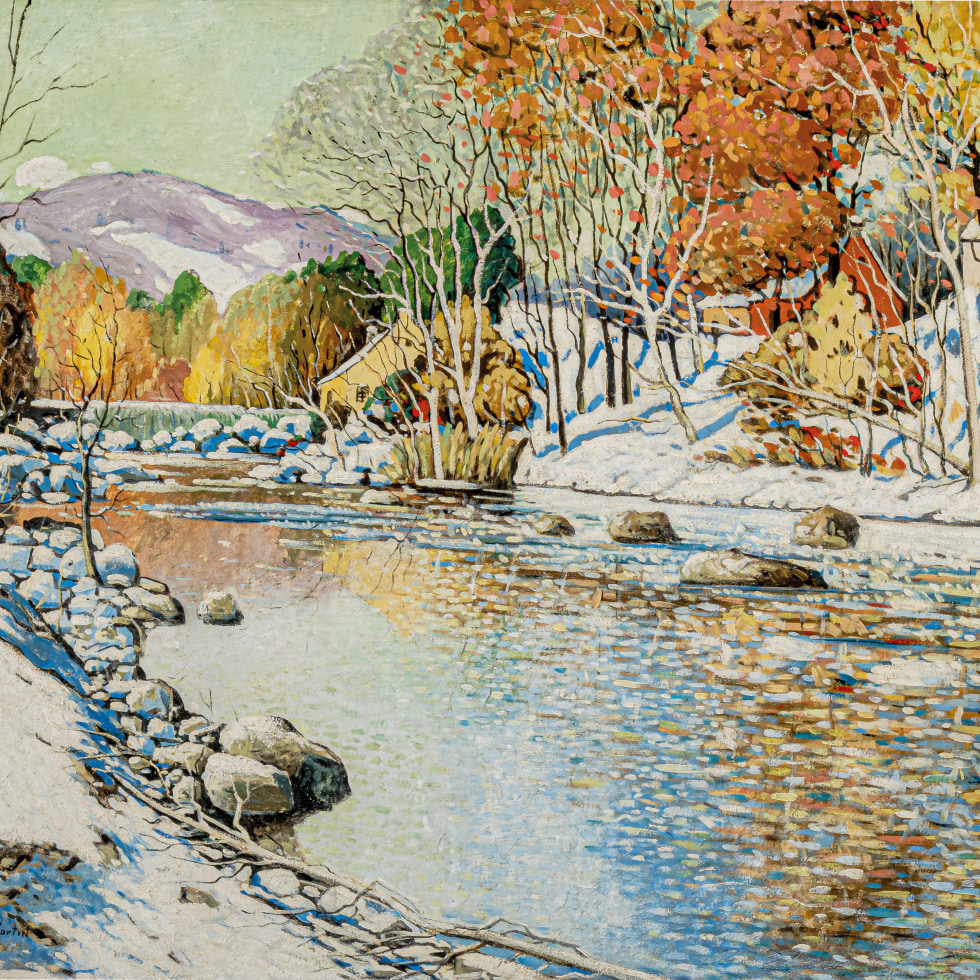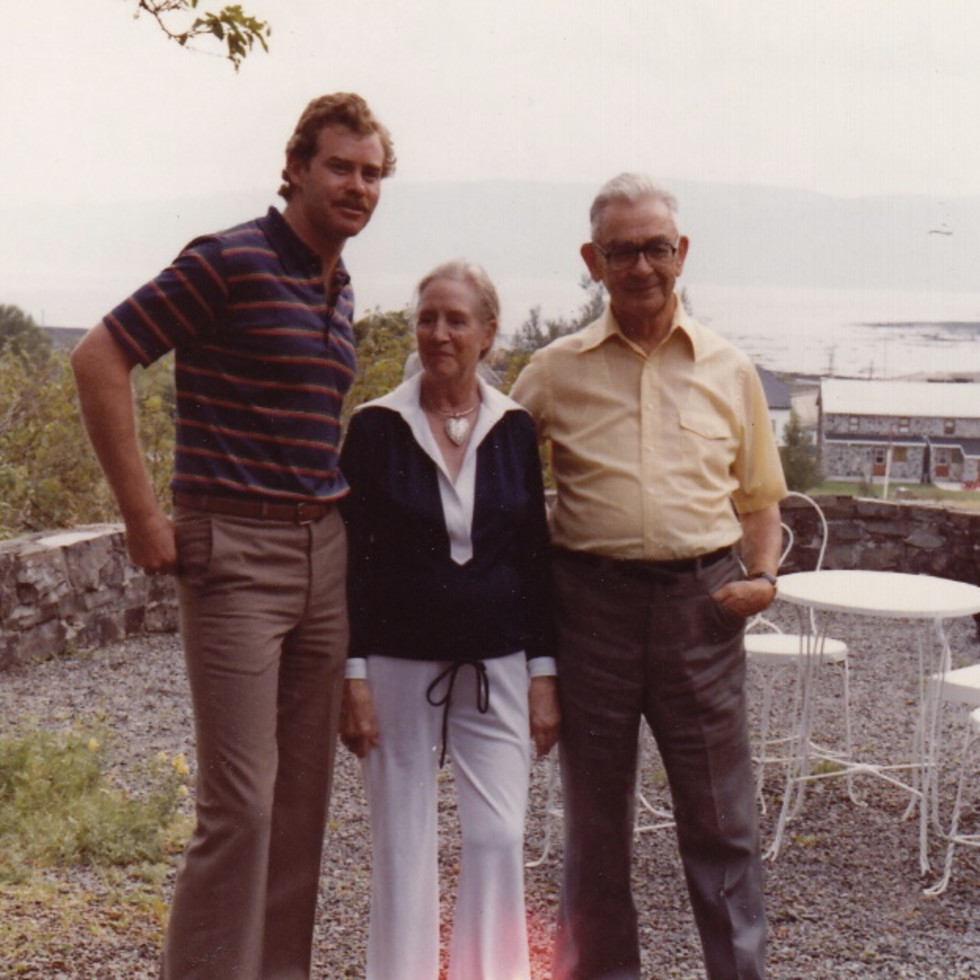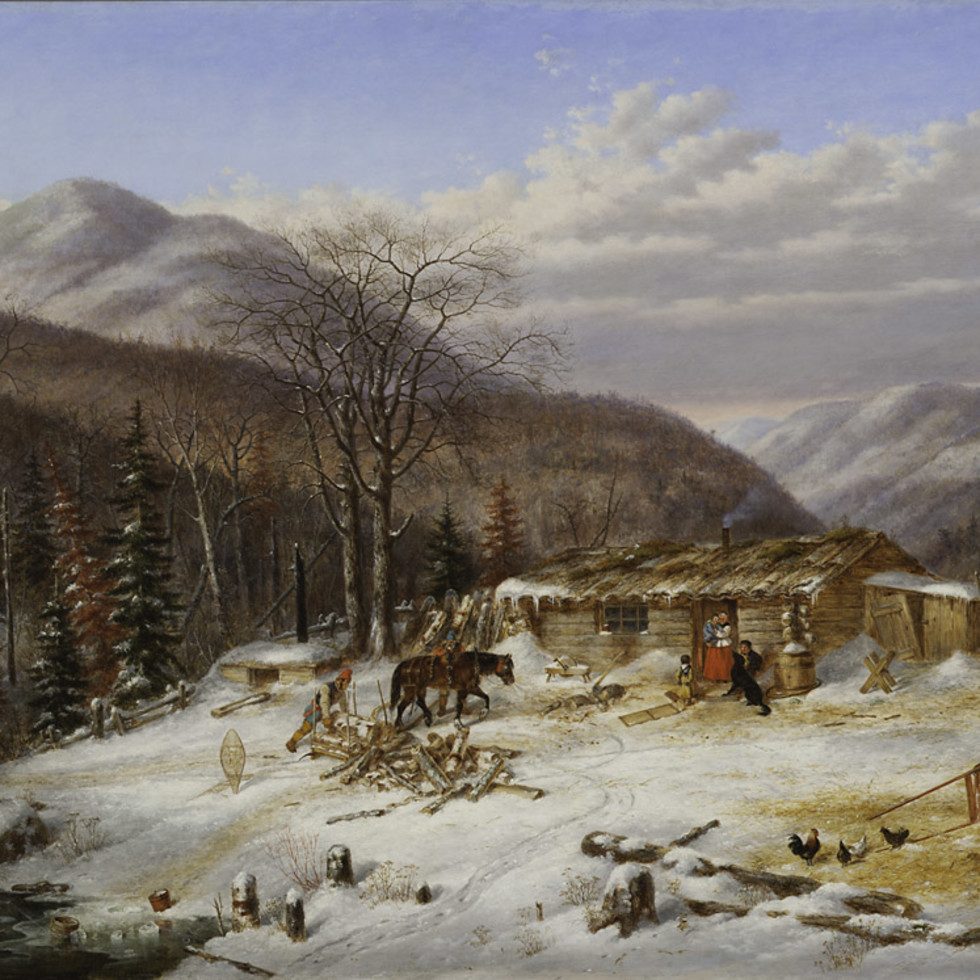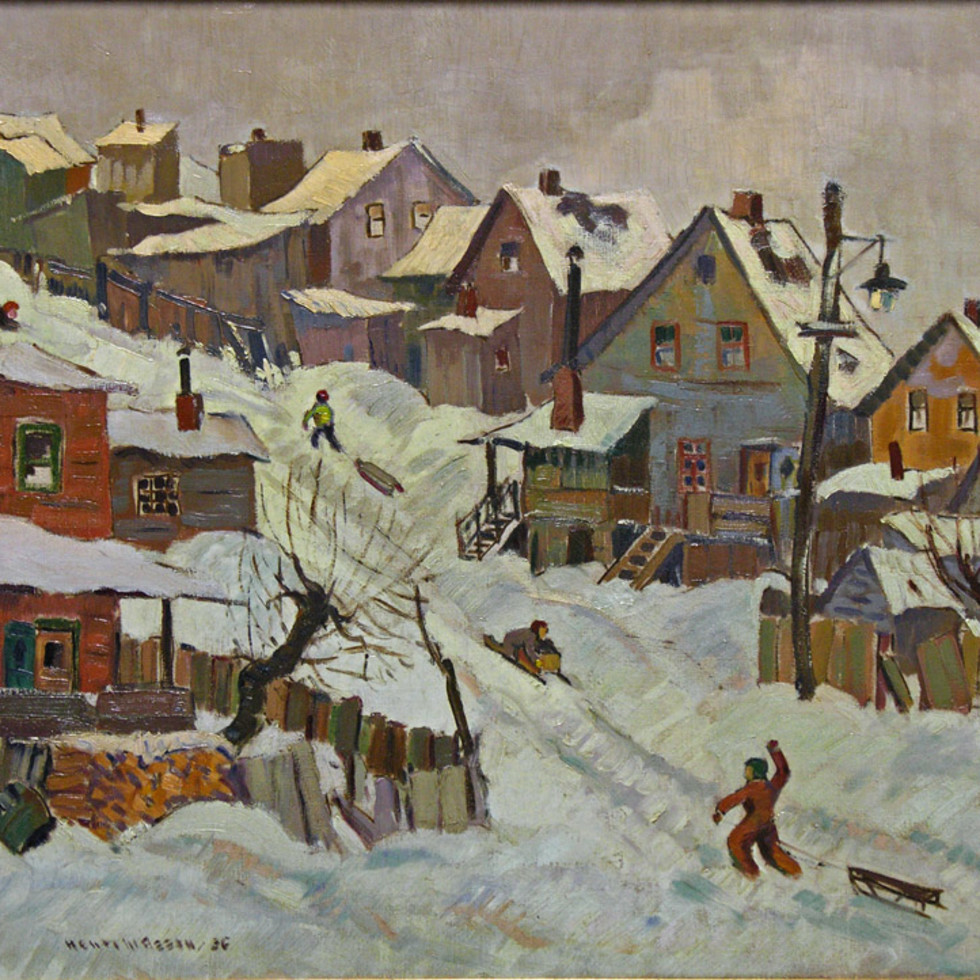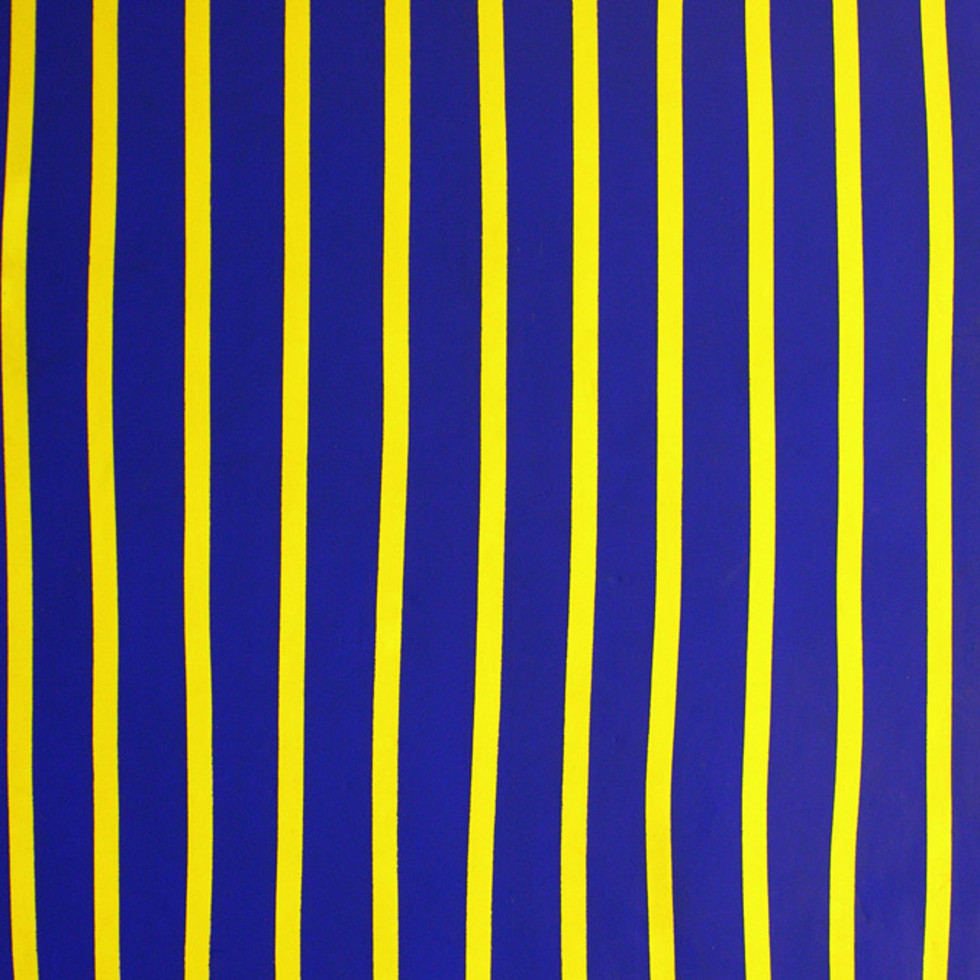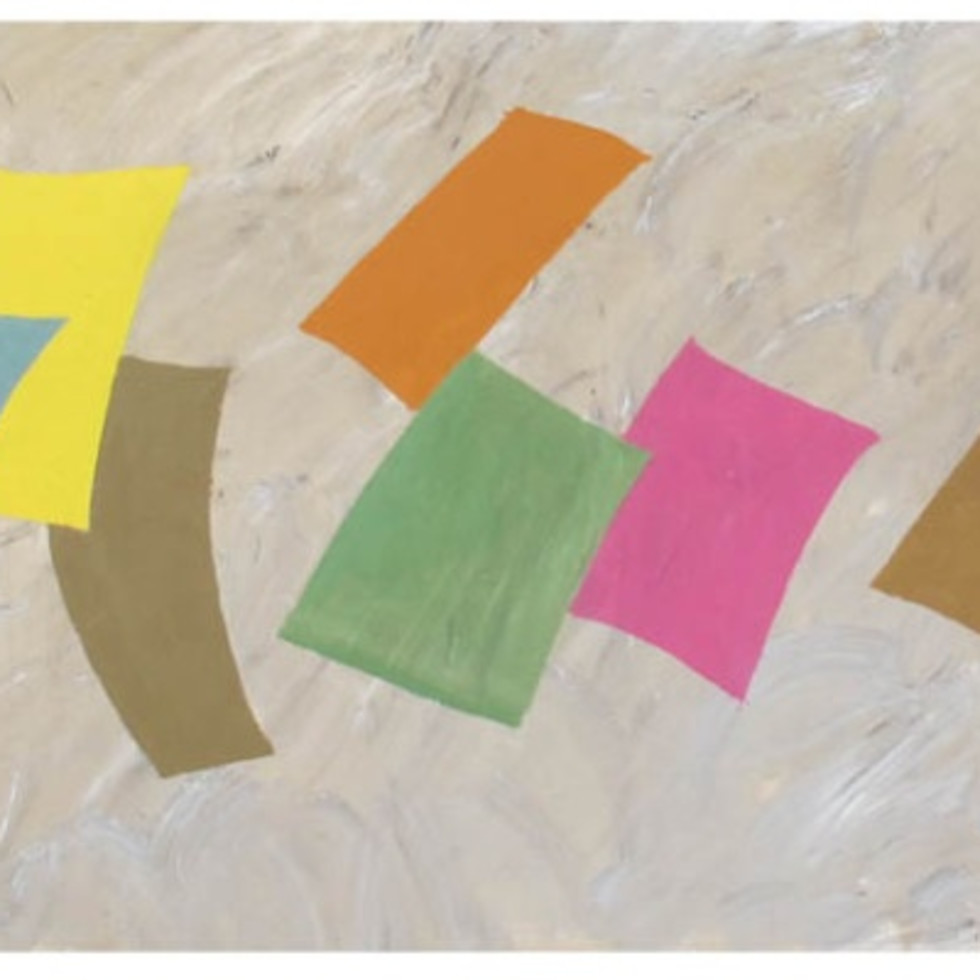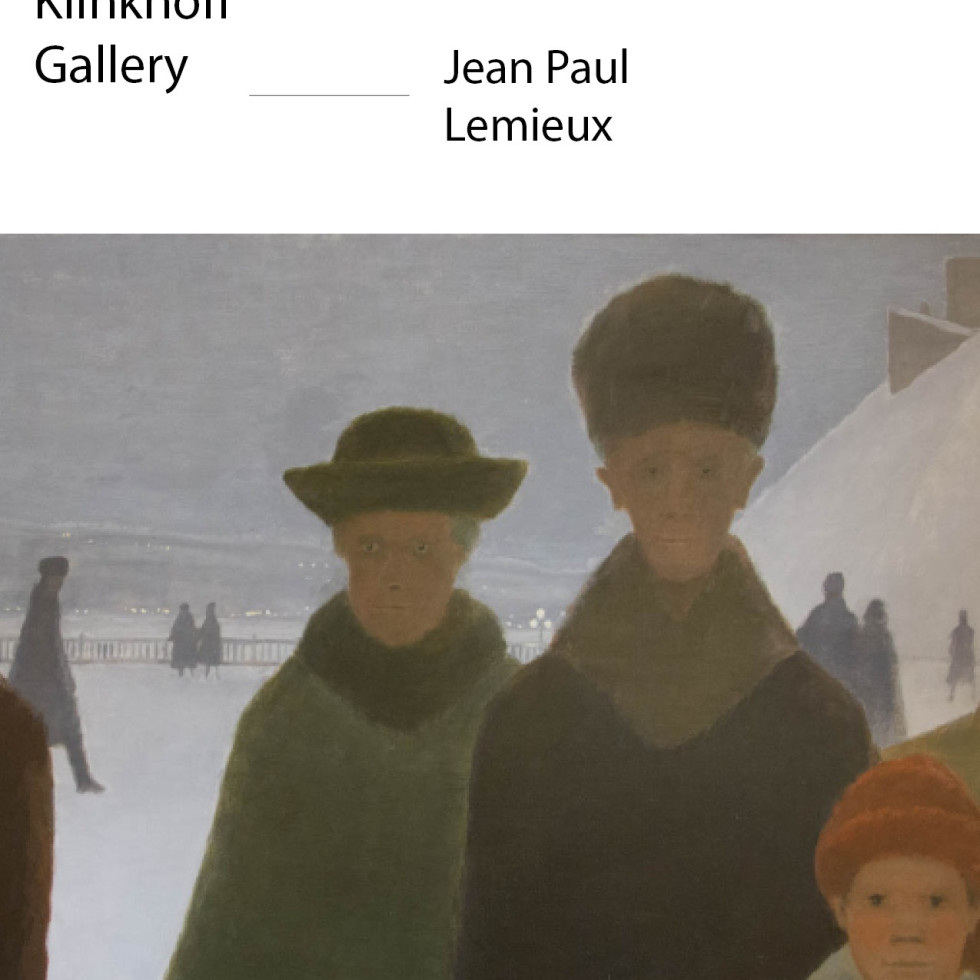Jean Paul Lemieux
 Jean Paul Lemieux, painter, illustrator, critic, and teacher, is one of the most significant artists in the history of Canadian modernity.
Michèle Grandbois
Jean Paul Lemieux, painter, illustrator, critic, and teacher, is one of the most significant artists in the history of Canadian modernity.
Michèle Grandbois
Jean Paul Lemieux was born in Quebec City, Quebec. Recognized as one of the most important modern painters in Canada, Lemieux is celebrated for his paintings of existential themes, provocative works contemplating man and his place in the universe.
Lemieux studied at the École des beaux-arts de Montréal from 1926-29. After graduation he spent a year in Paris, where he met artist Clarence Gagnon. He returned to the École des beaux-arts de Montréal from 1931-35 to obtain a teaching diploma. In 1935 he taught at the École du meuble, then moved to the École des beaux-arts in Québec in 1937, remaining there until 1967. Lemieux then moved to Île-aux-Coudres, Quebec, where he lived for the rest of his life.
Lemieux has received numerous honours throughout his career including the Louis-Philippe Hébert Prize; the Molson Prize for the Canada Council; the Order of Canada and the National Order of Quebec. He was honoured by the Montreal Museum of Fine Arts by a major retrospective exhibition in 1967. Subsequent tribute exhibitions were organized by the Musée du Québec and the National Gallery of Canada. Lemieux's work can be found in important public and private collections including the National Gallery of Canada, Art Gallery of Ontario, Art Gallery of Hamilton, Museum London in London, Ontario, Montreal Museum of Fine Arts and the Musée national des beaux-arts du Québec.
Lemieux died in Quebec City, in 1990, at the age of 86. Following his death, he was made member of l'Académie des Grands Québécois, 1990 and Grand Officer of the National Order of Québec, 1997. Furthermore, retrospective exhibitions were held at the Musée national des beaux-arts du Québec in 1992, 2004 and 2007, and at the National Gallery of Canada in 2004.





